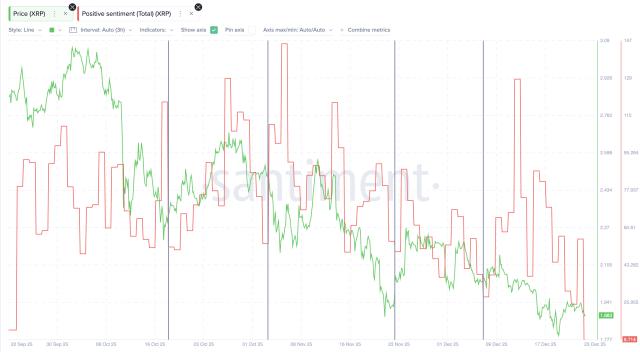1. Why did the Federal Reserve expand its balance sheet by US$300 billion
Since last Friday, due to the ferment of the SVB incident, some regional banks in the United States have suffered serious runs. Depositors have transferred their deposits to large banks. Some small and medium-sized banks with Liquidity can only turn to the Federal Reserve to borrow money through mortgage loans. Satisfy Liquidity expenditure pressure.
At present, the Federal Reserve has provided Liquidity through three channels. The first is the traditional discount window (Discount Window, DW) which provides approximately US$148 billion in Liquidity; the second is the newly established Liquidity tool BTFP. About $12 billion in Liquidity ; the third is to provide $143 billion to the new entities of SVB and Signature after being taken over by the FDIC.
2. What is the relationship and difference between these three types of loans?
All three are mortgage loans, but there are differences in the borrower, collateral content, loan term, collateral valuation, interest rate, disclosure details, etc.
The discount window (DW) is the most traditional tool used by the Federal Reserve to provide Liquidity support to banks experiencing Liquidity problems. Borrowers are all savings structures with stable operations (including banks and savings banks); collateral includes not only risk-free U.S. bonds and Agency MBS, but also various corporate bonds, commercial loans and home loans; the loan period is from overnight to 3 months month; the loan amount provided is equivalent to the market price (or market price estimate) of the collateral minus a haircut (depending on the collateral rating); the interest rate is the upper end of the federal funds rate range (currently 4.75%), Disclosure of borrower information is after two years.
The BTFP is a new tool launched by the Federal Reserve this week. Its borrowers are also all savings institutions; the collateral only includes risk-free U.S. debt and Agency debt (including MBS); the loan period is up to one year; the loan amount provided is equal to the collateral par value; the interest rate is OIS rises by 10bps, and the disclosure of borrower information is in March 2025.
FDIC borrowing is essentially to provide loans to the new entities "Silicon Valley Bridge Bank" (SVBB) and "Signature Bridge Bank" (SBB) established after the FDIC took over SVB and signature, so that these banks after being taken over by the FDIC can complete depositor withdrawals These borrowings are backed by guarantees provided by the Ministry of Finance (FDIC is managed by the Ministry of Finance). The interest rate and term of the loan are unknown.
3. Why is the discount window used far more than BTFP?
There are several possibilities, listed from highest to lowest.
The main reason may be that the scope of collateral required by BTFP is too narrow and only safe assets are accepted. However, many of the banks that suffered the Liquidity shock this time were regional banks, mainly engaged in loan business, and there were not many treasury bonds and MBS on the asset side, such as FRC. So they can't use BTFP at all, only DW.
The second possible reason is that BTFP is a newly launched instrument and banks are not yet familiar with it.
The third possibility is that the stigma effect of BTFP is stronger than that of DW. But I personally think this inference is untenable, because BTFP’s collateral range is narrower. Although it can provide Liquidity according to market value, it generally has higher requirements than DW. Even if investors can see the unrealized losses of a bank from the use of BTFP, this information has already been disclosed in the annual report for listed banks and does not constitute a new signal. On the contrary, DW has a wider range of collateral and has always been regarded as having a taint effect. Therefore, the taint effect may not be the main reason for the huge difference in the usage of the two instruments.
4. Should this total amount of 300 billion be understood as the Fed restarting quantitative easing (QE)?
Not at all. For a central bank, monetary policy and financial stability are two major goals and have two sets of tools. The former are interest rate tools and balance sheet tools, while the latter are macro-prudential and various temporary Liquidity tools, which can be used without conflicting with each other. Just like in September last year, BOE raised interest rates while temporarily QE saved local pensions. In fact, the ECB meeting on Thursday raised interest rates by 50bps as scheduled, and Lagarde also expressed the same view that price stability and financial stability do not conflict.
Back to the present. From the point of view of purpose, QE is a monetary policy tool aimed at price stability and full employment; and the 300 billion yuan is a temporary Liquidity support aimed at maintaining financial stability. From a mechanism point of view, QE is the Federal Reserve’s initiative to buy out assets from the market and create reserves; and this 300 billion Liquidity is the initiative of commercial banks that lack Liquidity to borrow money from the central bank with certain qualified collateral as collateral. The central bank releases reserves passively. In effect, the reserves created by QE would flow (indirectly or directly) to bond and stock markets, depressing risk-free interest rates and raising the prices of risk-free and risky assets. However, the reserves created by this emergency Liquidity tool are Liquidity reserves for banks to deal with a run on the liability side or to prevent future outflows from the liability side, and are unlikely to flow to the bond and stock markets. The decline in interest rates on risk-free assets observed in the past two days is more likely to come from the rise in market risk aversion rather than the impact of the 300 billion flow.
5. Why is the 300 billion discount window usage higher than that of the 2008 GFC period? Does it mean that the Liquidity pressure of US banks is greater than that of 2008?
If you only compare the DW usage, then the usage last week did exceed the usage of about 100 billion during the GFC in 2008. But if you look at the total amount of reserves created by "all Liquidity tools", then this week's 300 billion line is far from the peak of nearly 1.7 trillion US dollars during 2008. The reason is that DW was not a major tool for Liquidity creation in 2008.
One reason is that the banks at that time were very afraid of the taint effect of DW, and they used DW as much as possible if they could not use it. As a result, the Federal Reserve had to rely more on the way of actively auctioning Liquidity(TAF tools) to the market for Liquidity delivery; another reason was that at that time Financial institutions experiencing Liquidity difficulties are not limited to banks, but also include primary dealers (PD, the primary dealers were not under the supervision of the Federal Reserve, and they could not directly borrow money from the Federal Reserve like banks), money market funds, and corporate financing sectors, asset-backed securities (ABS), non-US financial institutions, etc. Therefore, the Federal Reserve has established a large number of targeted tools to support the financing needs of different sectors. For example, MMIFF for money market funds, PDCF for primary dealers, TALF for the ABS market, swapline for non-US institutions (the counterparty is an overseas central bank), and CPFF for corporate short-term financing activities. These specific tools were the main providers of Liquidity at that time, and DW played a relatively minor role.
Therefore, if one looks at Liquidity tools in aggregate, the Liquidity pressure faced by the current financial system is far less than that in 2008.
6. What is the forward-looking meaning of such a large amount of Liquidity tools used for the US monetary policy?
As mentioned above, central banks usually treat financial stability and price stability separately, and use two sets of tools to deal with them separately. Therefore, as long as the financial stability tools are playing their corresponding role, the central bank will usually continue the original policy stance with more confidence in terms of monetary policy. Now that DW and BTFP are currently being used and functioning, they have eased the need for the Fed to use interest rate tools to maintain financial stability—at least in the near term. After all, trying to ease the Liquidity pressure or repayment crisis of financial institutions by adjusting interest rates is like asking a seriously ill person to drink more hot water, which is probably useless.
7. JPM said that the consumption of BTFP may reach 2 trillion. How did this figure come from?
The JPM report actually said that the theoretical upper limit of the use of BTFP tools can reach 2 trillion, and the calculation method is also very simple. Assuming that the entire banking system uses all the US debt and Agency MBS held as collateral, it can be exchanged for About more than 2 trillion US dollars.
However, most of the banks that have problems this time are regional banks. The four largest banks in the United States (JPM, Citi, BoA, and Wells Fargo) not only do not have a Liquidity crisis, but are facing excess Liquidity due to deposit inflows. On the other hand, the distribution of U.S. debt and MBS is mainly concentrated in the four major banks. The total amount of U.S. debt + MBS held by them is 2 trillion US dollars, accounting for 70% of the scale of U.S. debt + MBS held by the entire U.S. banking system. Since the four major banks are unlikely to use BTFP, the banks that really need to use BTFP will put up at most about US$700 billion in qualified collateral. Considering that FHLBs and the four major banks will also provide some Liquidity to banks that have suffered a run, the final usage of BTFP is likely to be at most 100 billion.








